Chances are, as a content creator, you’ve experienced creating a post spontaneously, without any planning.
While it may work for some, it’s not ideal. Why?
To quote the iconic motivational speaker Zig Ziglar, “Success is when preparation meets opportunity.”
If you want your content production to scale, you need to plan and execute with a well-thought-out strategy (while using limited resources).
And what better way to do that than with content calendars? They’re essential tools for anyone who wants to create great content consistently.
They allow you to plan out your content creation process from start to finish.
In this article, we’ve rounded up the top 6 templates so you can get started right away on next year’s content plan.
But if you’re new to the idea, don’t worry; we also have an in-depth guide about creating content calendars if you need help getting started.
But First, What Is A Content Calendar?
Content calendars are essentially time management systems that organize your workflow into weekly or daily blocks.
This helps you stay organized and focused on creating high-quality content.
Content calendars are extremely useful for bloggers, freelancers, and other content creators.
You can create your own using Excel sheets, or make a copy using the free templates below, then adjust it to your brand’s needs.
Why Should I Use A Content Calendar?
Whether you’re the only content specialist in your in-house ecommerce company or an agency social media manager, a content calendar makes you better organized with your campaigns.
It helps heaps, too, when you’re trying to collaborate with multiple teammates, so they know what’s needed and when.
Why? At a glance, it’s easy to understand what went live, along with the copy and asset used. Sort your posts by social platform and assign some color coding. Usually, each tab is marked by month.
Because you can see the bigger picture (at least a month in advance), you can go ahead and map out themes and daily social posts ahead of schedule, plan well-researched infographics with your designer, and track how your posts are doing.
You’re better equipped to craft your message to your target audience, keeping in mind their wants and needs when the seasonal trends come and go.
You can plan around holidays and big world events, from Valentine’s Day to Pride Month or any national event relevant to your brand values.
(Not to toot our own horn, but we have our own marketing calendar to help you with just that!)
Plus, since you’re planning ahead, you’re less likely to commit a faux pas since the content will be brainstormed, briefed, approved, and published before crunch time. It’s a protective measure, really.
Without further ado, here are our picks (most of them are free!).
Top 6 Content Calendar Templates (And Tools) For 2023
1. CoSchedule
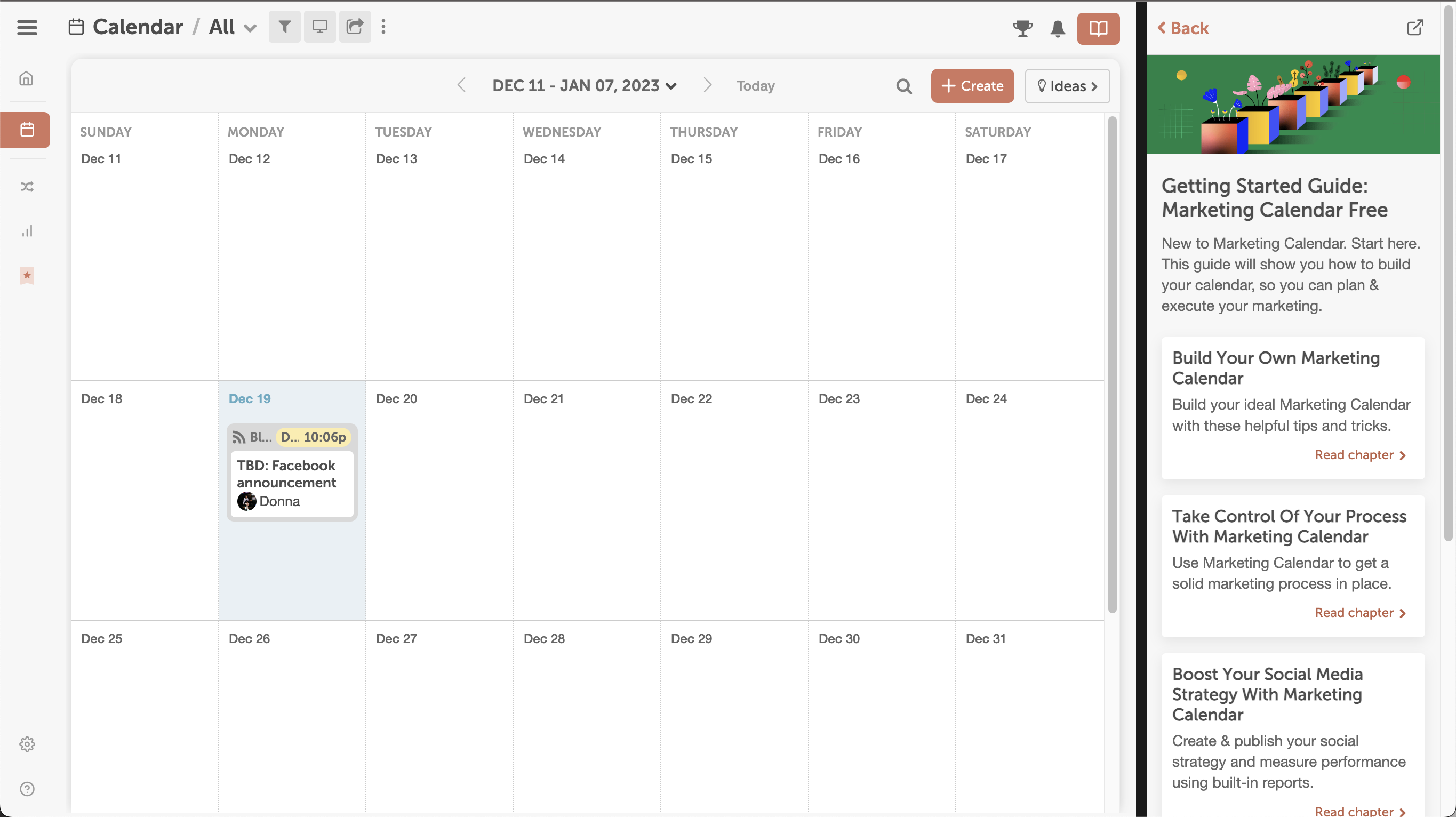 Screenshot from CoSchedule, December 2022
Screenshot from CoSchedule, December 2022
If you’re running a WordPress blog, CoSchedule may be your best bet. It truly shines in content marketing and is ideal for individual bloggers, influencers, or freelancers.
The intuitive calendar is easy to use, with seamless integrations including WordPress, Twitter, Instagram, Facebook, MailChimp, and more (11 apps in total, and not just social media).
We recommend this one if you manage your blog and social media.
- Cost: Free – just create an account.
2. Airtable
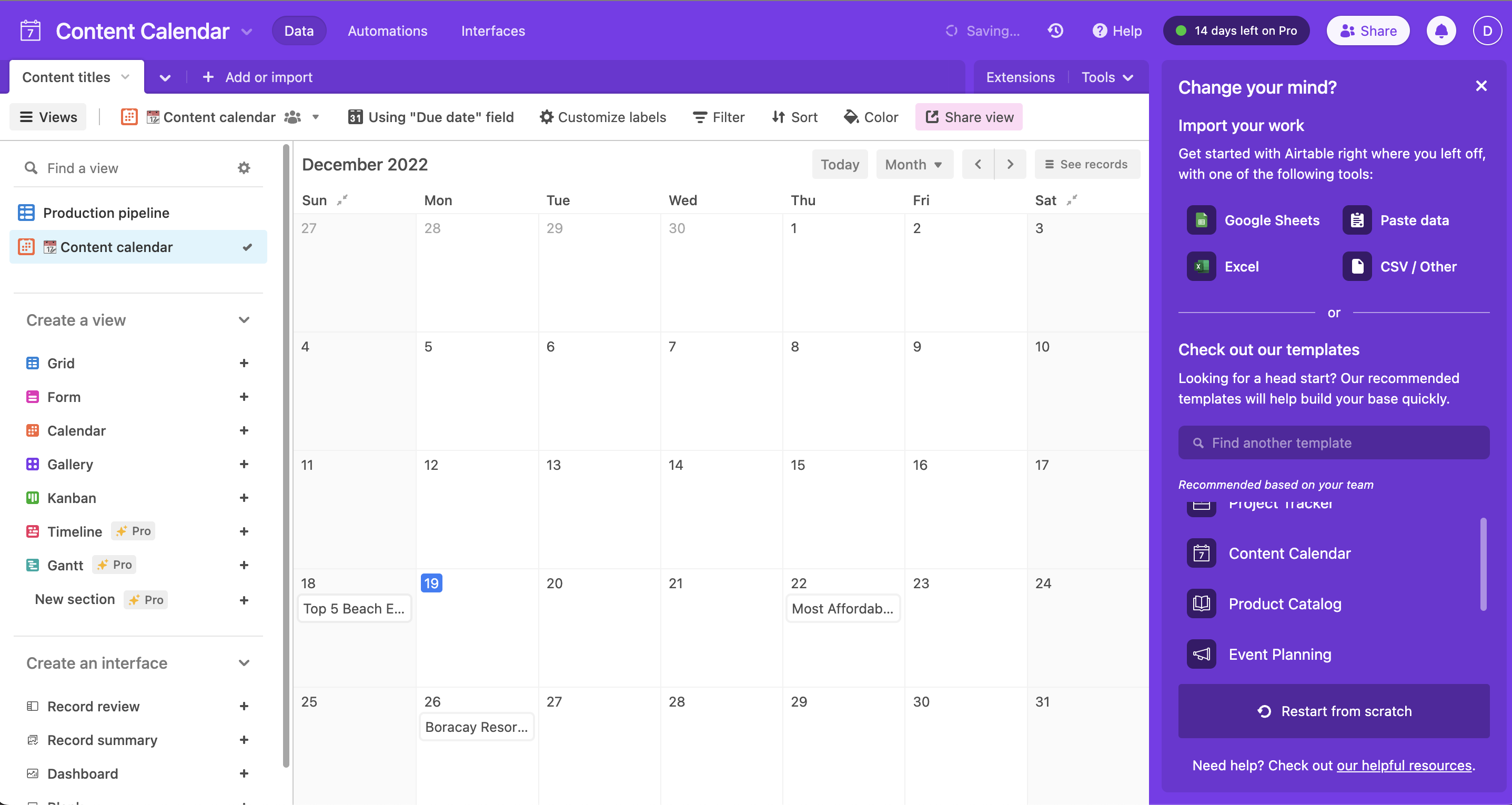 Screenshot from CoSchedule, December 2022
Screenshot from CoSchedule, December 2022
Do you have an existing Google Sheet, Excel file, or CSV file of a content calendar but wish to move to an app?
Airtable would be a great pick.
With its automation (Slack or email) to remind you of certain posts and its ability to handle multiple fields of data without needing formulas (for non-Excel fans), Airtable can save you time and hassle.
I especially like that it has the necessary fields that a content specialist would have in mind when assigning blog posts: Title, Writer, Due Date, Status, and Image. And you can create more customized fields.
You can also view your calendar in a grid, kanban, or calendar form. I’d expect project managers and specialists working with a larger marketing department to find this useful.
- Cost: Free with a 14-day trial; then, you’d be switched automatically to a free version.
3. HubSpot (Free Template)
 Screenshot from HubSpot, December 2022
Screenshot from HubSpot, December 2022
Excel geeks, rejoice!
HubSpot’s free Social Media Content Calendar is pretty flexible. Just insert the month + year, and adjust the template to suit your brand.
There’s a tab for Schedule, Content Repository, Twitter Updates, Facebook Updates, LinkedIn, Instagram, and Pinterest.
What do we love about this one? HubSpot listed a couple of examples for each platform.
And there’s even a PDF that goes with it when you download the template to help beginners map out posts and monitor them.
It’s more for social media than blog posts, so we recommend this one for social media specialists in startups and in-house social media managers for ecommerce brands.
4. Trello (Free Template)
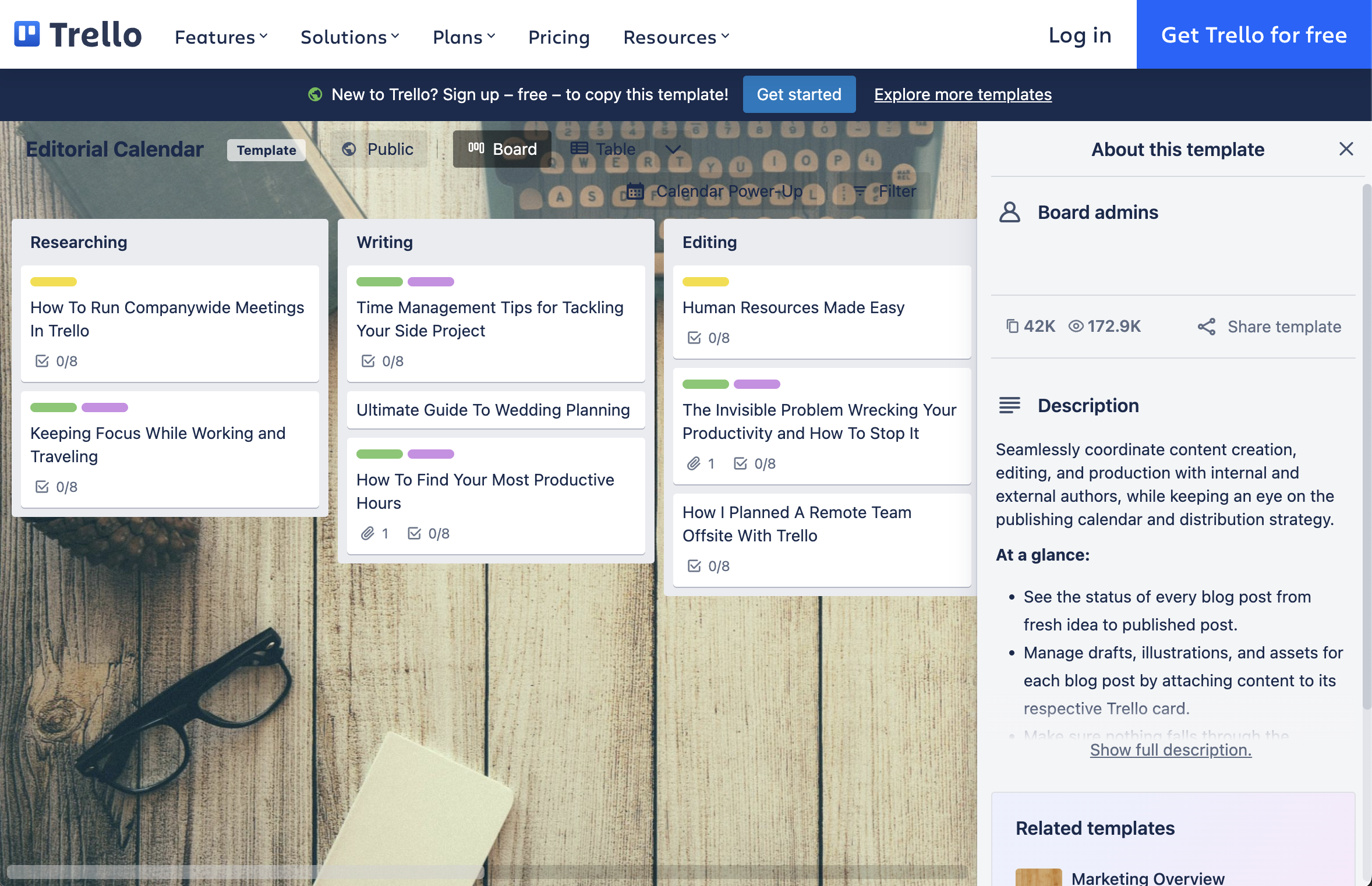 Screenshot from Trello, December 2022
Screenshot from Trello, December 2022
A popular project management tool, Trello is an ideal content calendar choice for massive teams already on an Agile framework and using similar products (Jira, Confluence, etc.).
The drag-and-drop functionality is easy to use. One glance, and you know what the task status is.
It’s easy to assign subtasks to team members, set due dates, attach revisions, and give feedback.
We recommend this one for massive enterprises or busy publication teams who need to have a better grip on their content production next year.
5. Loomly
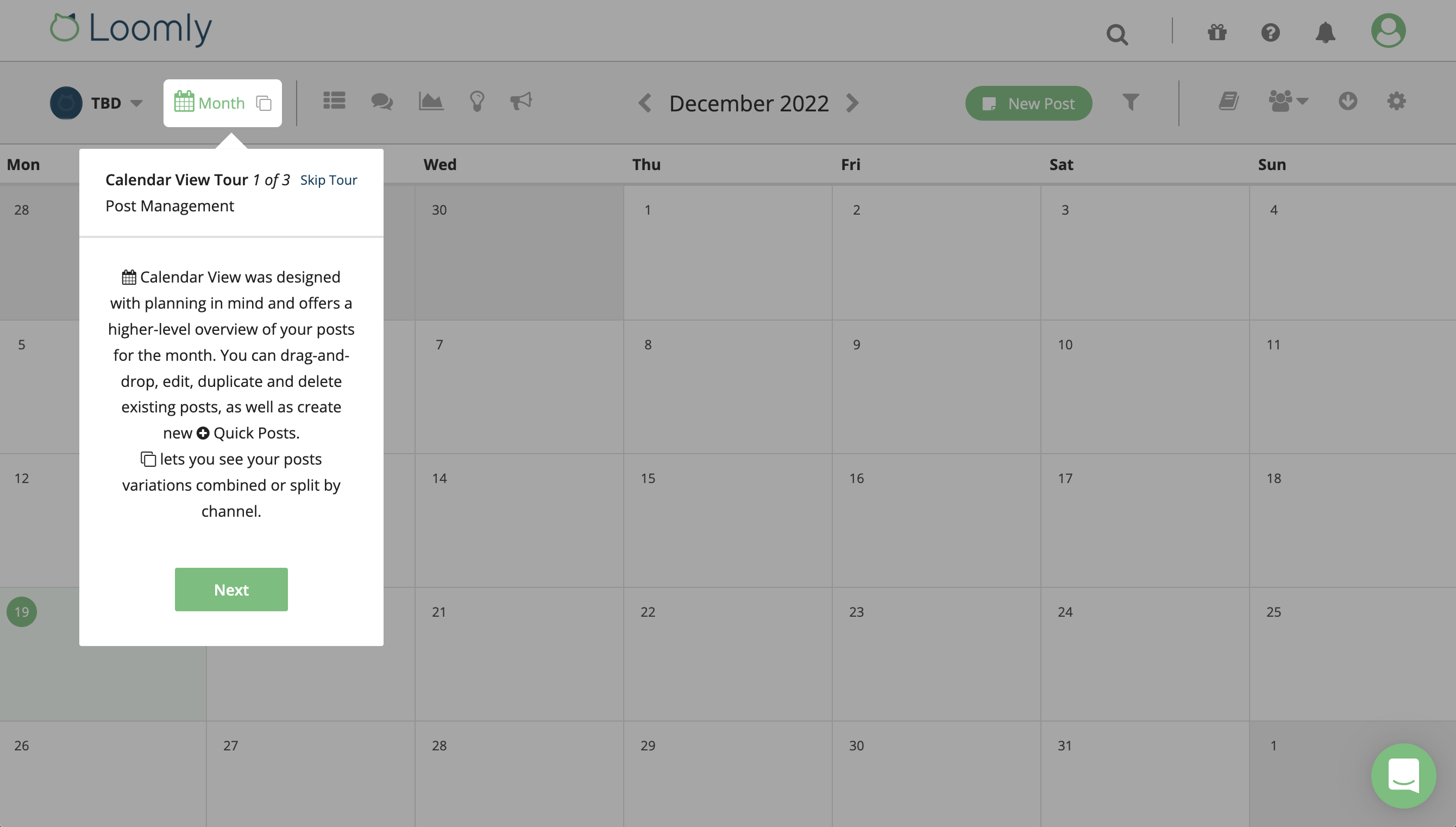 Screenshot from Loomly, December 2022
Screenshot from Loomly, December 2022
What I liked about Loomly was that it felt fit for purpose, especially for social media managers. And creative people, take note!
What sets it apart: It can pull from your RSS feeds and present up to 90 post ideas or automatically create quick draft posts.
It’s a cool feature for people who are perpetually experiencing writer’s block (like I am). I didn’t really see that feature on the other apps.
Fashion, beauty, travel, arts, and other creative product type brands social media specialists would benefit the most from choosing Loomly.
- Cost: At least $26 monthly after a 15-day free trial.
6. Hootsuite (Free Template)
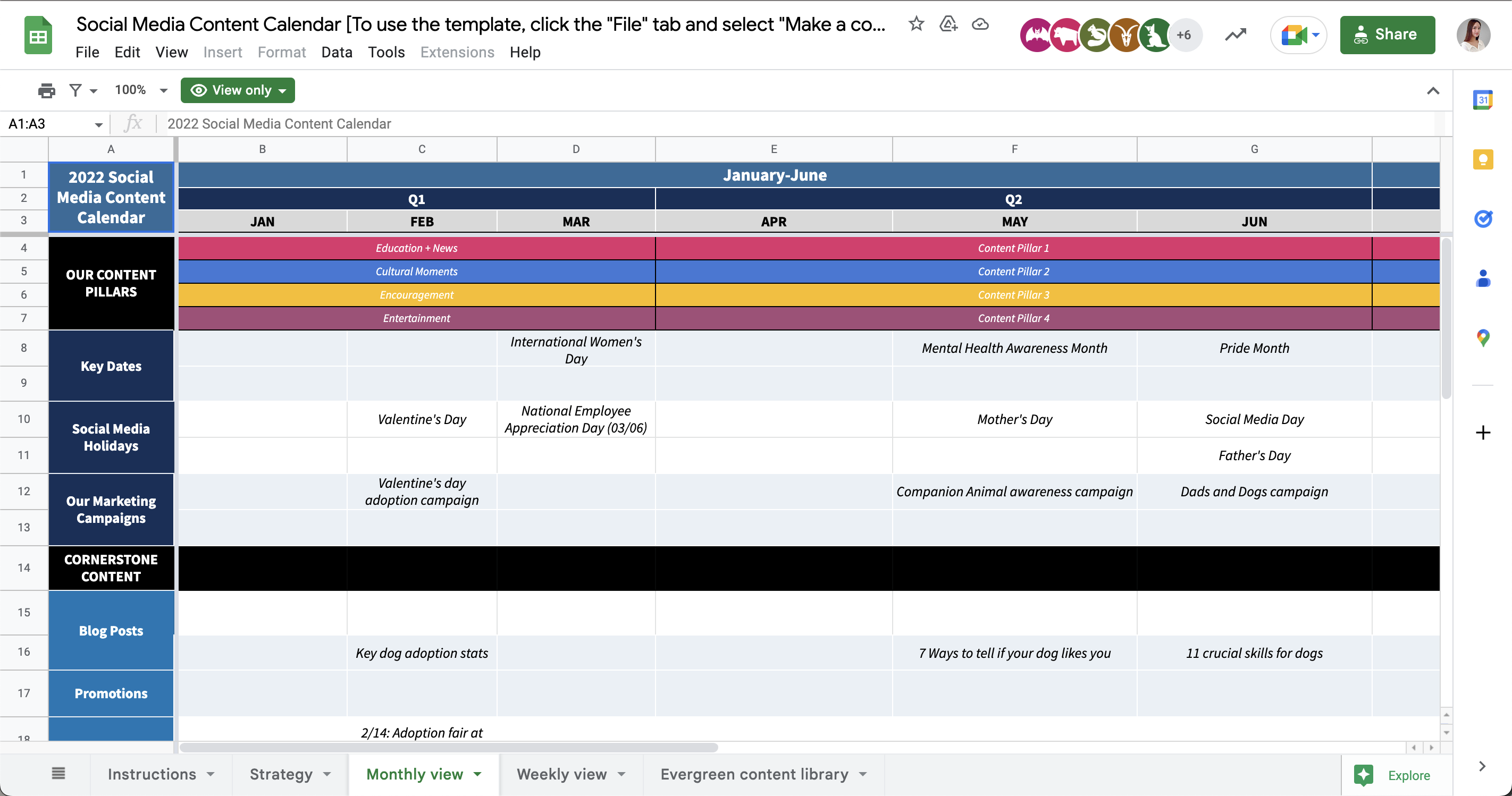 Screenshot from Hootsuite, December 2022
Screenshot from Hootsuite, December 2022
Similar to HubSpot’s template, Hootsuite has a downloadable, free Google Sheet spreadsheet with five tabs: Instructions, Strategy, Monthly View, Weekly View, and Evergreen Content Library (for Instagram, Facebook, LinkedIn, and any platform).
The weekly view is a feature I haven’t seen on the other templates.
What I like most about this template is the key dates available throughout the year under January to June and July to December. Events like Black Friday and Small Business Saturday (USA) are pretty helpful for B2B.
The simple-to-use template is ideal for Excel pros who don’t want to use a paid tool and the extra features that come with it.
Conclusion
Initially, this list was a lot longer (around 10), but some of the ones I cut out meant their signup or download process was cumbersome – too many steps, crazy pricing, too hard sell, or lead to a 404 page.
As long as I couldn’t download their calendar within two minutes for some reason or another, I didn’t put it on this list.
Knowing I did the dirty work, you can rest assured that one of these tried-and-tested calendars should work for you next year.
Try them out and go with what feels right; choose the one you can live with for at least another year.
Leveling up on your blog posts, overall marketing campaigns, and social posts takes a lot of planning.
With some hard work, creativity, and planning, these tools can help propel your brand to new heights.
Happy New Year, and may the odds be ever in your favor!
More Resources:
Featured Image: Andrey_Popov/Shutterstock
